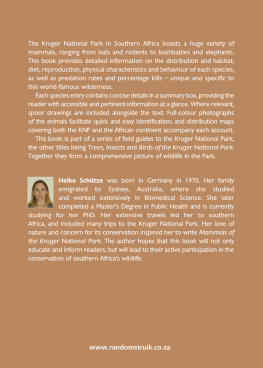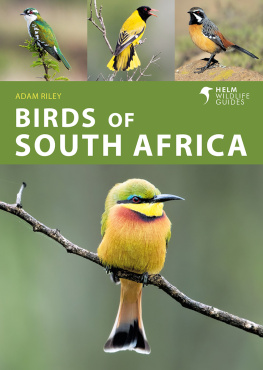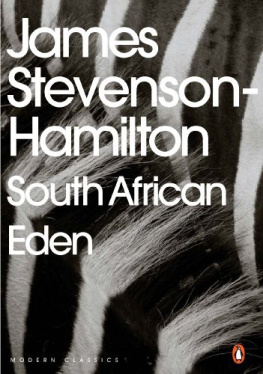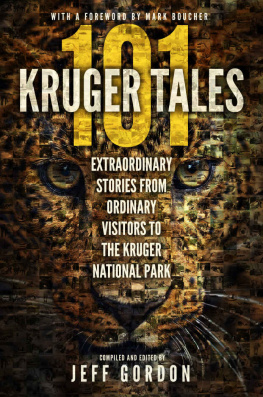
Published by Struik Nature
(an imprint of Random House Struik (Pty) Ltd)
Reg. No. 1966/003153/07
80 McKenzie Street, Cape Town, 8001
PO Box 1144, Cape Town, 8000 South Africa
Visit us at www.randomstruik.co.za
and subscribe to our monthly newsletter
for monthly updates and news
First Published in 2002, second edition 2010
This eBook edition 2013
Copyright in text, 2002: Heike Schtze
Copyright in photographs, 2002: Heike Schtze and Individual photographers listed on
Copyright in spoor drawings, 2002: Heike Schtze
Copyright in maps, 2002: Heike Schtze
Copyright in published edition, 2002: Random House Struik (Pty) Ltd
Publishing manager: Pippa Parker
Managing editor: Helen de Villiers
Editors: Helena Reid, Katharina von Gerhardt
Designer: Bridgitte Chemaly
Cover design: Robin Cox
Picture researcher: Carmen Hartzenberg
Maps: Illana Fridkin
All rights reserved. No part of this publication may be reproduced, stored in a retrieval system, or transmitted, in any form or by any means, electronic, mechanical, photocopying, recording or otherwise, without the prior written permission of the copyright owner(s).
ISBN 978 1 77007 900 7 (Print)
ISBN 978 1 43170 190 2 (ePub)
ISBN 978 1 43170 191 9 (PDF)
Acknowledgements
My thanks to the following, without whom this project would not have been possible:
To all the researchers, scientists, conservationists and wildlife enthusiasts who have collected and studied specimens and collated data over many hundreds of years: their valuable work has enabled this work to be collated.
To the many sources of help, support, encouragement, time and assistance: P. Schtze, A. Ruff, G. Smith, R. Driscoll, J. Kingsley, H. Steynes, L. Patencia, A. Smith, A. Hutson, Dr G. Amori, N. Ratenbach, D. MacFadyen; G. Smit, R. Coetzee, C. van der Walt, G. Zambatis, H. Bryden.
Special thanks to:
Herbert Schtze, for tireless hours of help during the field work and for reviewing many drafts; the Kruger National Park for access, accommodation and use of facilities, and particularly Danie Pienaar, Kruger National Park Scientific Services Manager, for his generous time and assistance in providing data and information, and for reviewing the drafts; the African Hunting Co. for the kind permission to reproduce field signs listed in appendix 1; Jacana Education, for the kind permission to reproduce the Kruger National Park Ecozone Map; and Qantas, for their generous assistance with airfares.
Particular thanks to:
Billiton and Britz Africa, the corporate sponsors, for actively supporting and promoting education and environmental and wildlife conservation through their generous financial support, without which this project would still be an unfulfilled wish. I gratefully acknowledge their interest and support.
Preface
Having had the privilege of travelling extensively throughout southern Africa, I decided to compile this book for two reasons: first and foremost, to promote nature conservation through wildlife awareness. Although there are numerous wildlife protection bodies, their long-term success depends on sustained, honest management, as well as sound wildlife education aimed at the general public. Conservation is everyones responsibility. Gaining an understanding of African wildlife leads to an interest in its welfare. At the same time, it underlines the importance of ways in which habitat and resource needs can be met, not only of growing human populations, but also of wildlife. How unfortunate it would be if future generations could not experience African wildlife in all its diversity. Thus, the second reason for writing this book to compile a comprehensive, easy-to-use guide aimed at wildlife experts as well as novices, offering insight into mammalian behaviour, and how mammals interact with one another and their environment.
There is more to game-watching than simply keeping a checklist of sightings. If you stop to look and listen, immense rewards can be gained from observing animals in their natural environment. On one of my trips to the Kruger, I came across several tourists watching two impala rams sparring playfully. Suddenly, the rams behaviour changed, and they seemed to start acting in a peculiar way: prancing with stiff legs, and jerking their heads while letting out loud snorts. While they were doing this, several of the tourist groups moved off to find the more glamorous species. Yet if they had understood that they were witnessing impala signalling alarm, and had they waited a few more minutes, they would have had the opportunity to see a leopard not more than 30 metres away, stalking its prey!
This book covers all the mammalian species known to occur in the Kruger National Park, which accurately represents a large proportion of the mammals found in the southern African region. Data for the smaller species (bats, moles, shrews and rodents) is grouped according to families or subfamilies. Many of these species cannot be differentiated with the naked eye, and without the aid of dental and/or chromosomal analysis, so no attempt is made to discuss them separately. Instead, a general background is given to the different families/subfamilies, providing the reader with an overall understanding of these mammalian groups.
To aid the reader in identifying the different mammal species of the Kruger, field signs and tracking data are tabulated in can be consulted.
DEDICATION
To my wonderful husband, Brad, whose support
helps me achieve all I want to achieve.
CONTENTS
Foreword

Since the Kruger National Park was founded more than 100 years ago, numerous books and articles have been written about its dazzling biotic diversity. To date, more than 2 000 plant species (including 336 tree species), 507 bird species, 147 mammals, 114 reptiles, 49 fish, 34 amphibians and many thousands of insects have been recorded, identified and described here. It is this spectacular variety, particularly among the larger mammals, that attracts the majority of the more than 1 million annual visitors to this best-known of all South African national parks.
Diversity is determined by the underlying geology, soils, water courses, altitude, slope and climate, which in combination create a mosaic of different habitat types. These different ecozones detemine animal distribution. In order to assist visitors, this Field Guide to the Mammals of the Kruger National Park uses an excellent ecozone map to describe the areas favoured by the different mammalian species, providing the reader with the latest information on animal distribution in the Kruger Park, as well as across the African continent.
Ecosystems are not static, and climatic and rainfall cycles influence animal population numbers and distribution. The period from 1980 to 1997 were dry years with 1993 being the worst drought year in the recorded history of the Park. The buffalo population, for instance, crashed from 30 000 to below 15 000 and rare antelope species such as the roan antelope declined to worrying levels. The only herbivore species that did not decline during these droughts were elephant, white rhino and black rhino. Management strategies such as artificial water provision, or the burning policy, evolve as Park managers gain increasing knowledge on how ecosystems function. New initiatives such as the proposed extensive Transfrontier Park with Mozambique and Zimbabwe are being implemented. All these actions also influence game distribution and it is thus clear that guide-books have to be kept up to date.
Next page










